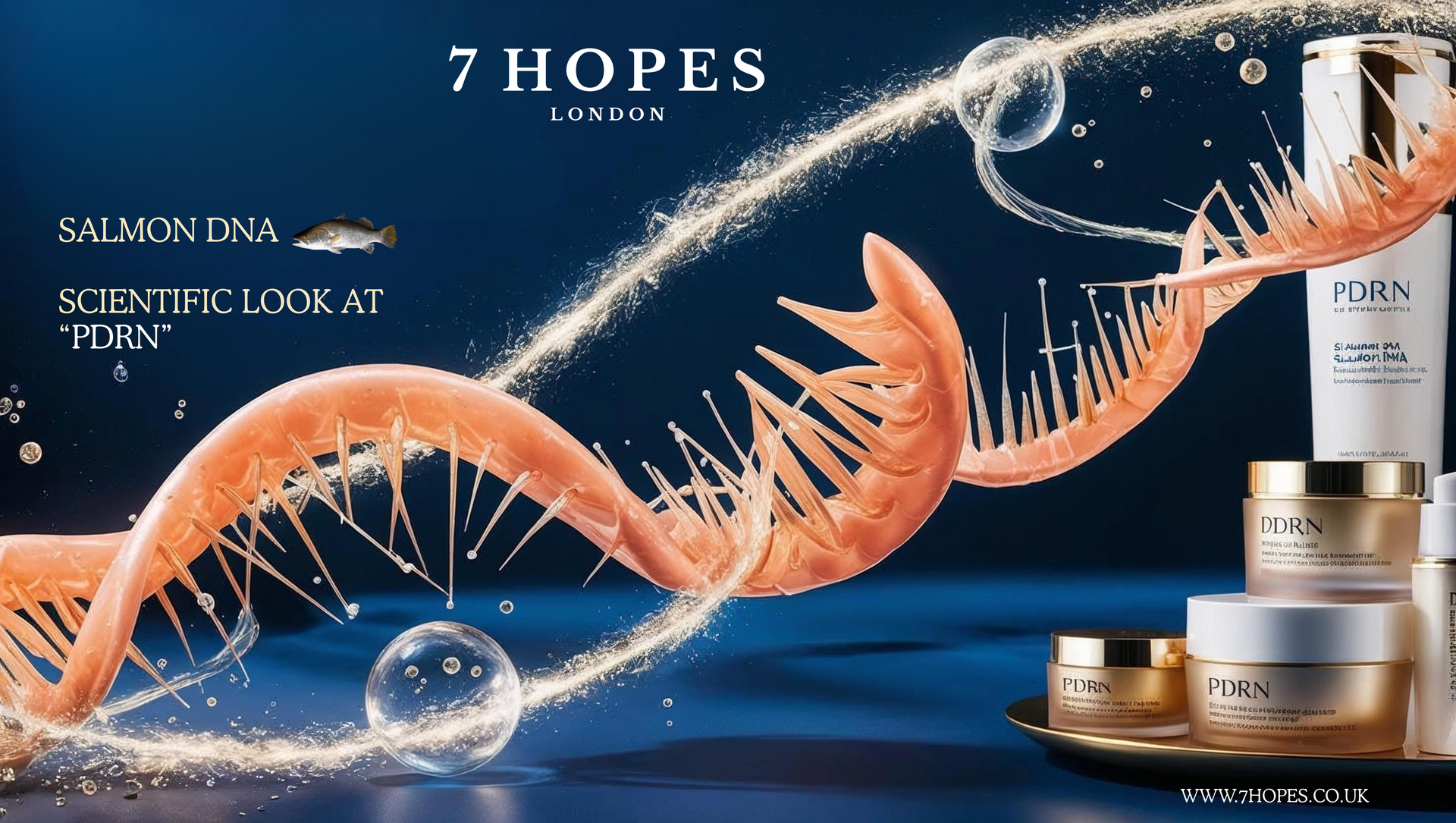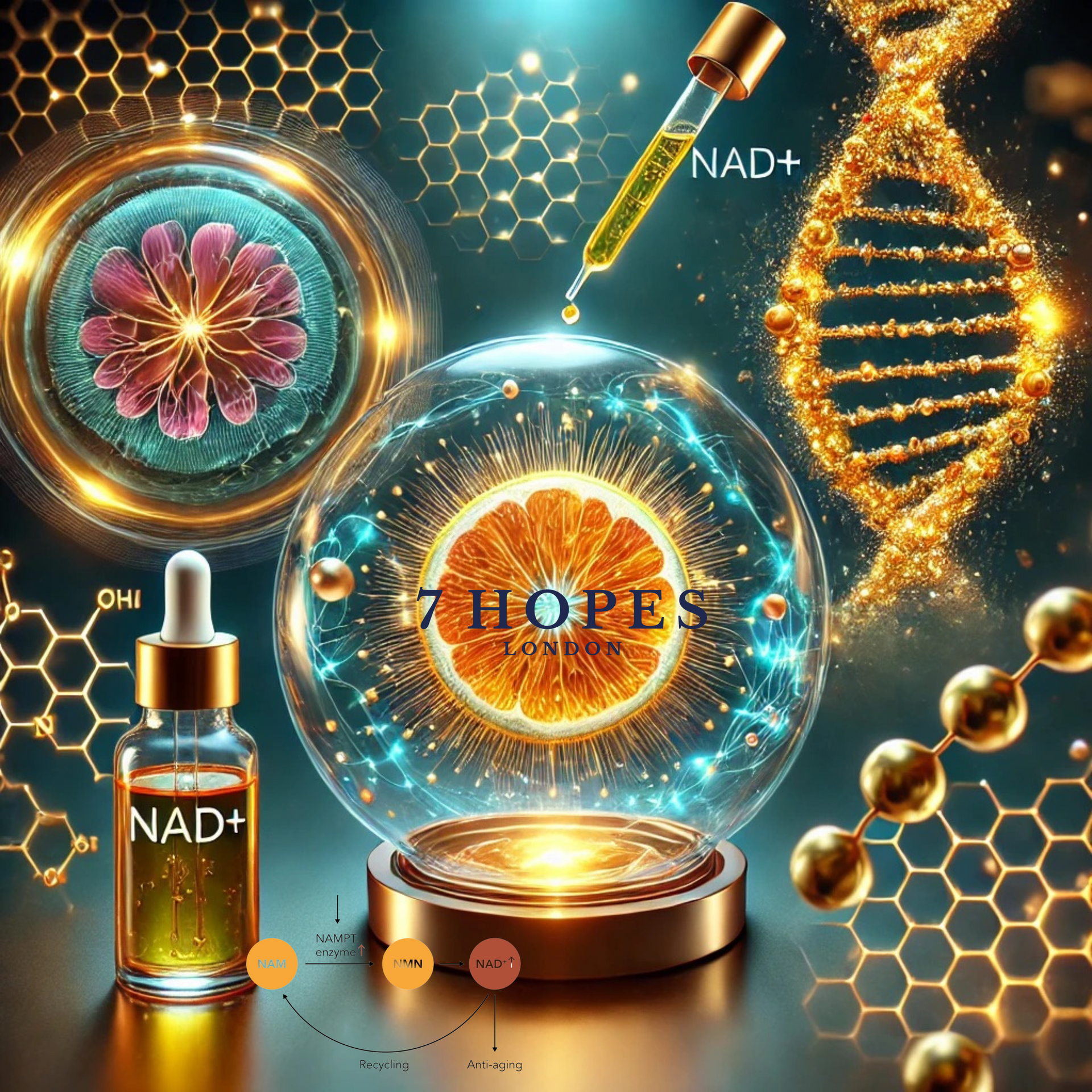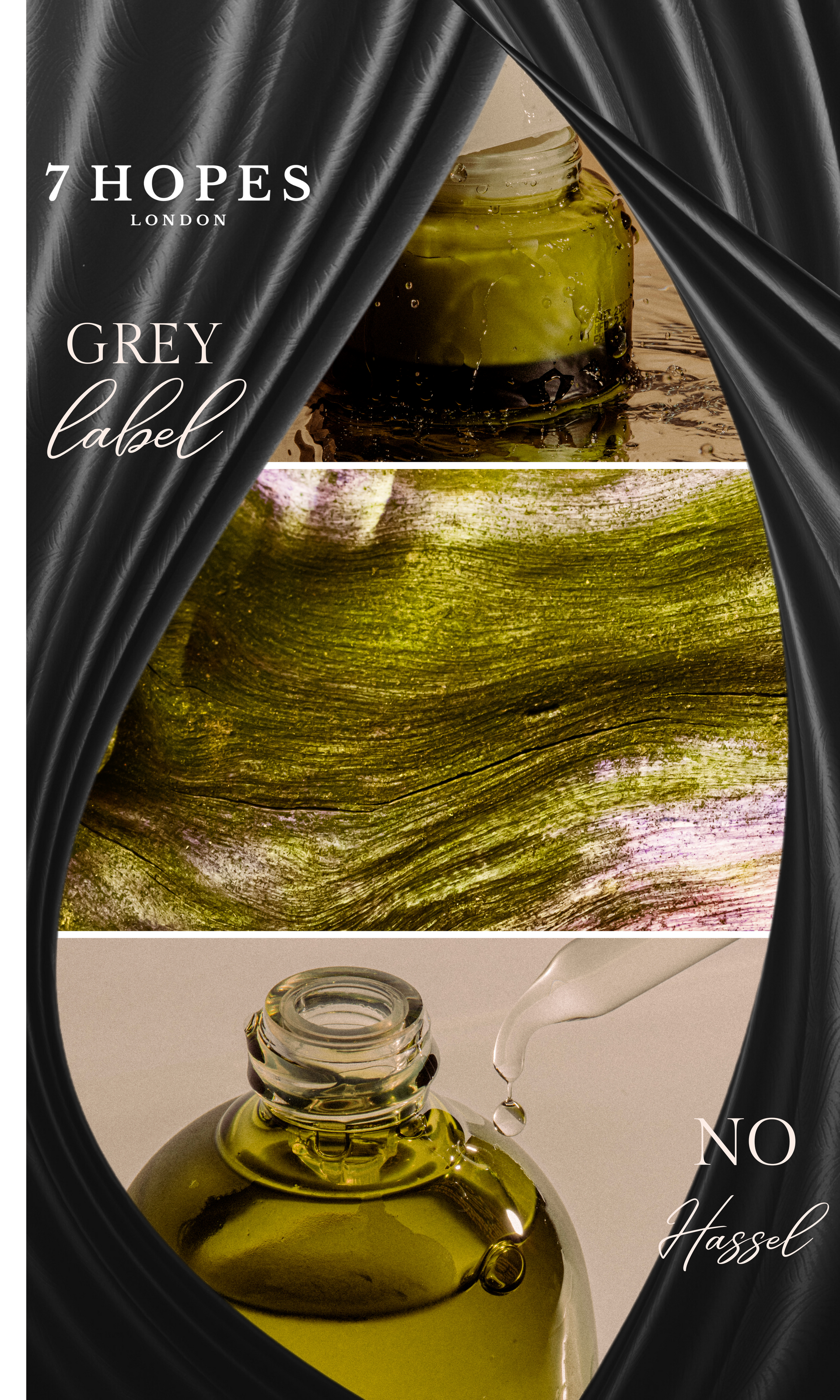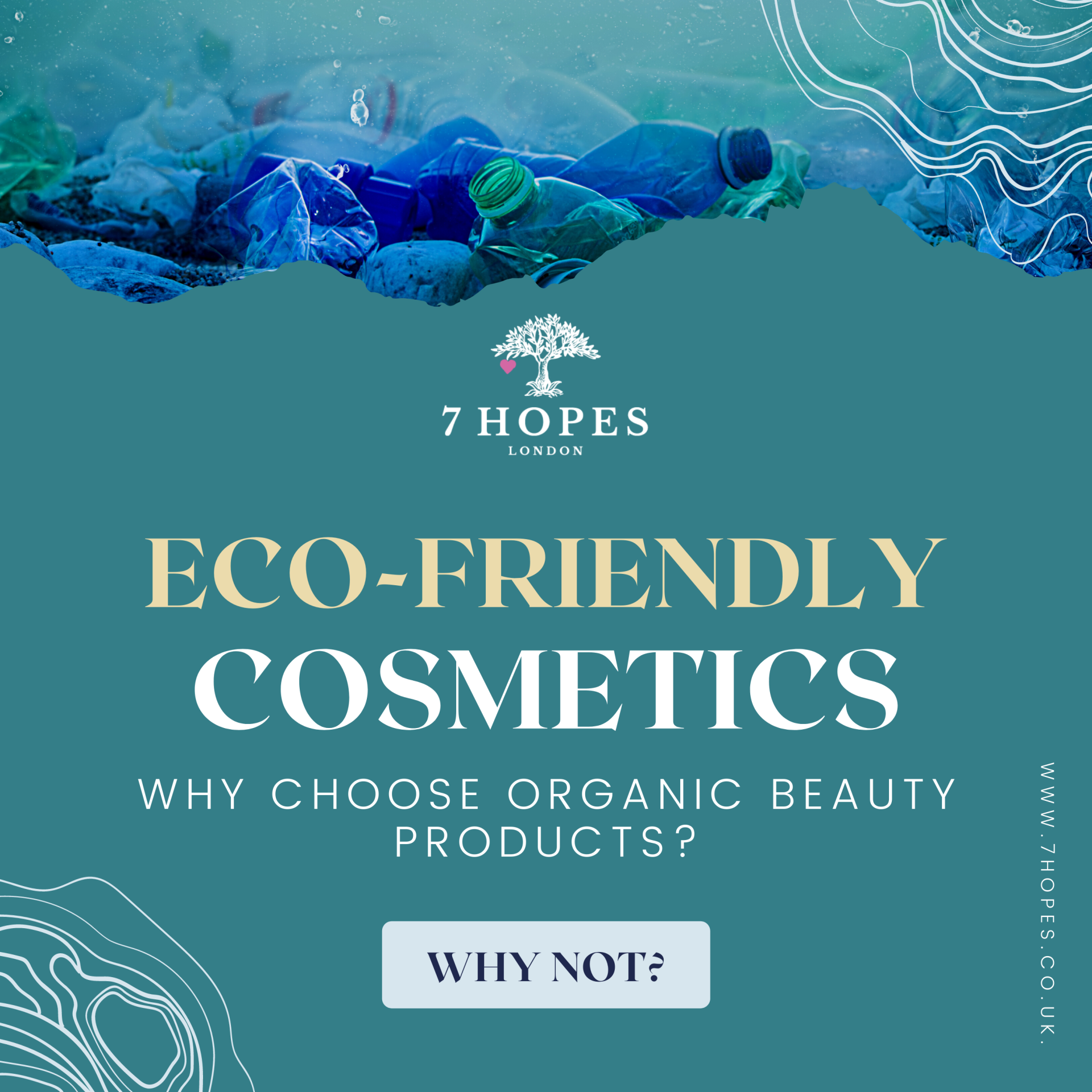Salmon DNA in Skincare: A Scientific Look at PDRN & Its Vegan Alternative
What is PDRN?

In an age where skin health is not only aesthetic but also scientific, one bioactive compound is reshaping the landscape of regenerative skincare: Polydeoxyribonucleotide (PDRN), commonly referred to as salmon DNA.
Initially utilized in medical fields for wound healing, PDRN is now being embraced by advanced skincare formulators for its dual biological and cosmetic effects. Whether sourced from marine origins or developed through bio-fermentation for vegan-friendly use, PDRN is earning its place in next-generation dermocosmetics.
🔍 What is PDRN?
Polydeoxyribonucleotide (PDRN) is a DNA-derived polymer composed of deoxyribonucleotides—fragments that are structurally similar to human DNA. These molecules act as biological messengers, promoting cell renewal, tissue repair, and anti-inflammatory processes.
Depending on the production method, PDRN can be sourced from purified fish DNA (typically salmon sperm) or synthesized using plant-based biofermentation technologies, making it accessible even to vegan skincare brands.
⚙️ Mechanism of Action: How It Works
PDRN exerts its skin-rejuvenating benefits through two key biological pathways:
1. Adenosine A2A Receptor Activation
When applied to the skin, PDRN activates adenosine A2A receptors on immune and epithelial cells. This leads to:
- Increased vascular endothelial growth factor (VEGF) for microcirculation and oxygenation
- Enhanced fibroblast proliferation for collagen synthesis
- Anti-inflammatory action and faster tissue repair
(Galeano et al., 2008)
2. DNA Salvage Pathway
PDRN supplies the skin with nucleotides and nucleosides used in DNA synthesis, accelerating cellular repair without placing additional metabolic stress on cells—a significant advantage in aging or damaged skin.
📈 Traditional Marine vs. Biotech-Derived PDRN
Both forms of PDRN—marine-derived and biotech-derived—share core regenerative properties, but differ in origin and composition:
Marine-Derived PDRN & Biotech (Vegan) PDRN Alternative
Source
Marine-Derived PDRN:Purified fish DNA (e.g., salmon sperm)
Biotech (Vegan) PDRN: Biofermentation of plant-based nucleotides
Structure
Marine-Derived PDRN:Double-helix DNA fragments (250–500 kDa)
Biotech (Vegan) PDRN: Nucleotide-rich biomacromolecular complex
Action
Marine-Derived PDRN:Binds TLR-9, boosts TGF-β, VEGF, collagen
Biotech (Vegan) PDRN: Stimulates fibroblast activity, collagen gene expression
Use Case
Marine-Derived PDRN:High-performance anti-aging, scar healing, dermal repair
Biotech (Vegan) PDRN: Vegan anti-aging, hydration, gentle skin regeneration
🧪 Scientific Evidence: What Studies Show
- Anti-Aging & Elasticity: Topical PDRN reduced wrinkle depth by up to 135%, increased dermal thickness by 300%, and improved skin elasticity by 26% in clinical models.
- Wound Repair: Animal studies showed enhanced wound closure and collagen matrix formation in diabetic and aged skin.
- DNA Repair: Reduced UV-induced cyclobutane pyrimidine dimers (CPDs) and increased expression of p53, a key protein in DNA repair.
📖 [Bitto et al., 2008 & 2011 – PMC5405115]
📖 [Scientific Reports, 2022 – doi:10.1016/j.jtumed.2022.11.002]
🌱 The Rise of Vegan PDRN
While marine DNA remains the benchmark for regenerative efficacy, newer bioengineered PDRN alternatives now offer:
- Plant-based nucleotides with >90% purity
- Clinically validated effects on collagen expression, fibroblast proliferation, and skin hydration
- Compatibility with vegan, halal, and cruelty-free formulations
- Enhanced ethical and sustainability positioning
This makes the vegan version ideal for brands targeting clean beauty consumers while preserving scientific performance.
💧 Topical Use: Beyond Injectables
Though PDRN is well known in aesthetic injectables, topical skincare applications have gained momentum due to:
- Enhanced delivery systems (liposomes, microencapsulation)
- Microneedling + PDRN serums used in medispas
- Leave-on creams and serums for daily rejuvenation
Topical application allows non-invasive use while still delivering noticeable benefits in hydration, firmness, and barrier repair.
Final Thoughts
Salmon DNA is a niche ingredient—it is a science-backed signal molecule guiding the skin’s own regenerative intelligence. Whether you choose traditional marine DNA or its vegan bio-fermented alternative, the message is clear:
🔬 We are entering a new age of bio-intelligent skincare.
Skin doesn’t need to be forced into youth—it needs to be reminded of its potential.
References / Sources
- Galeano et al. (2008) – PDRN for Tissue Regeneration via A2A Receptor Activation https://www.ncbi.nlm.nih.gov/pmc/articles/PMC5405115/
- Bitto et al. (2011) – Pharmacological Profile of PDRN in Collagen and Angiogenesis https://www.ncbi.nlm.nih.gov/pmc/articles/PMC5405115/ (Note: This is the same reference as above — contains multiple studies.)
- Choi et al. (2023) – In vitro Analysis of Plant-Based Nucleotide Complexes for Collagen Expression https://www.mdpi.com/1420-3049/28/21/7240
- Min HJ et al. (2022) – Salmon DNA Reduces Elastase Activity and Improves Skin Elasticity https://www.sciencedirect.com/science/article/pii/S2096691122000723
- PDRN & Nucleotide Synergy with Niacinamide and Vitamin C for Anti-Pigmentation https://www.ncbi.nlm.nih.gov/pmc/articles/PMC8879610/
- Review on Polynucleotides in Aesthetic Medicine (2023) – International Journal of Molecular Sciences https://www.mdpi.com/1422-0067/25/15/8224
#PDRN #SalmonDNA #BiotechSkincare #SkincareScience #RegenerativeSkincare #Dermocosmetics #CleanBeautyTech #SkinRenewal #AntiAgingInnovation #VeganSkincare #BioIntelligentBeauty #SkincareTrends #7HOPESLONDON















